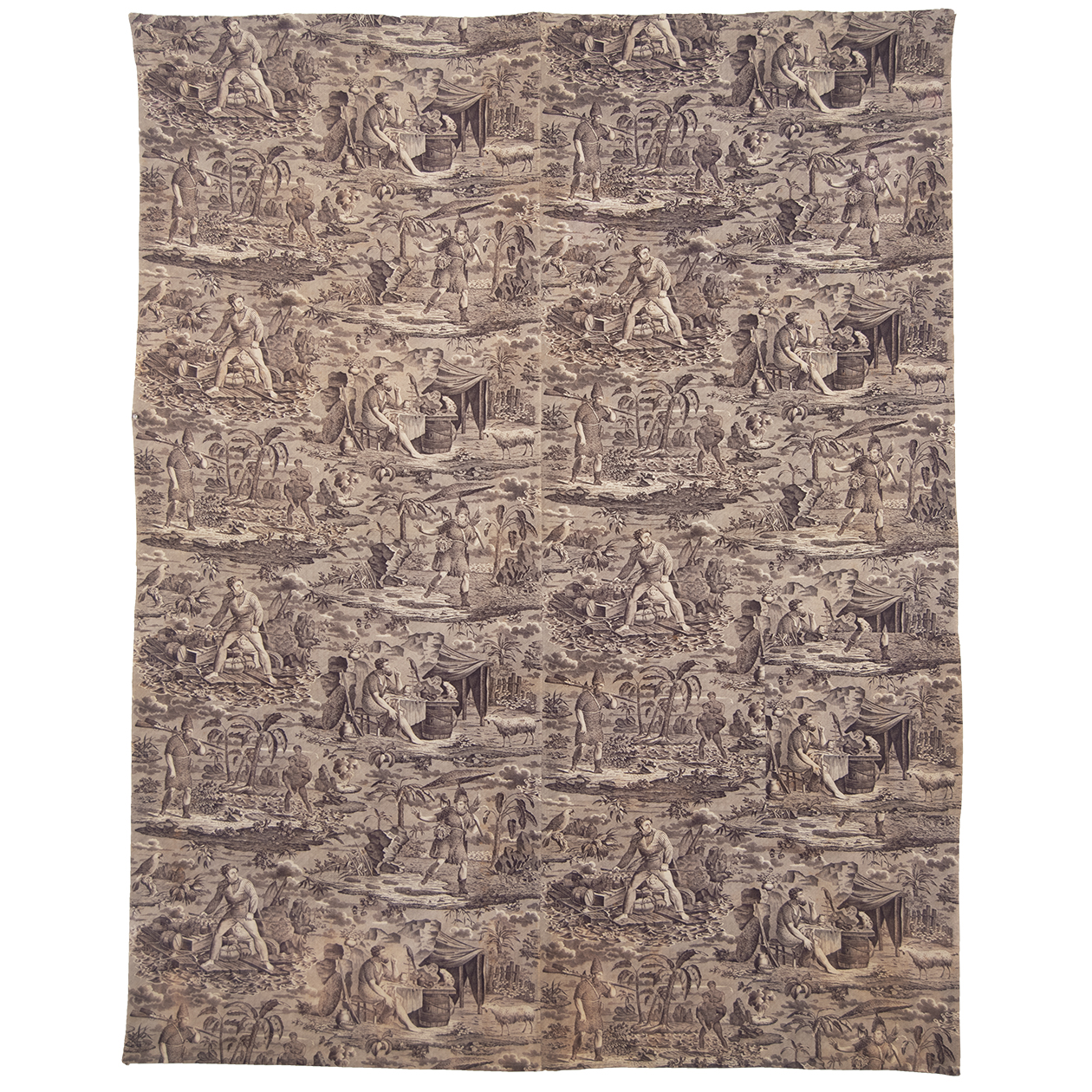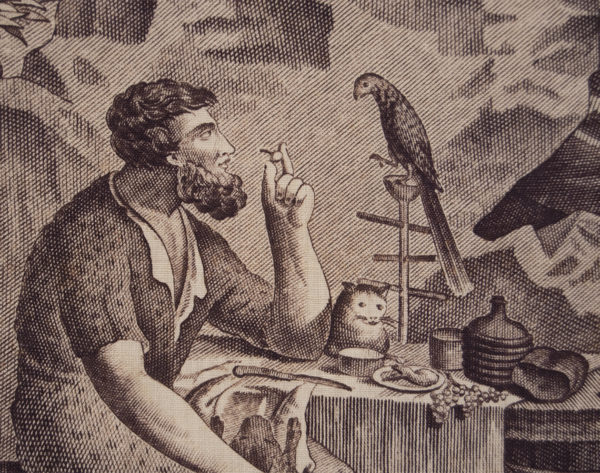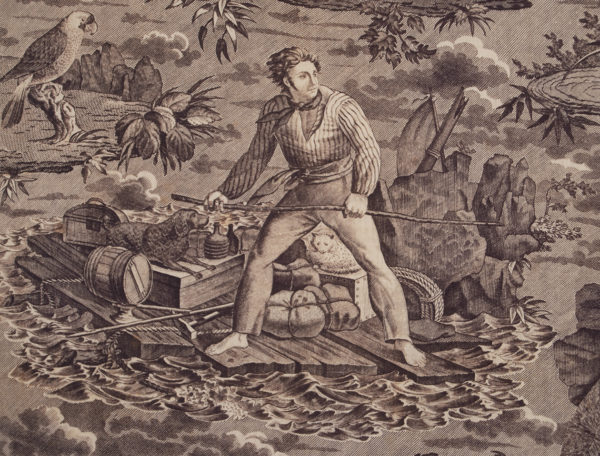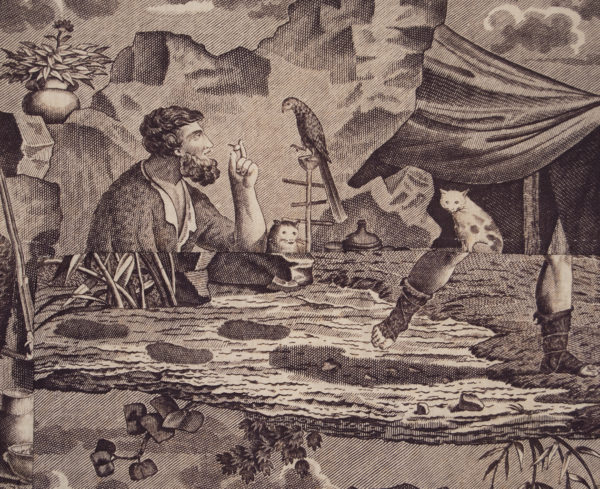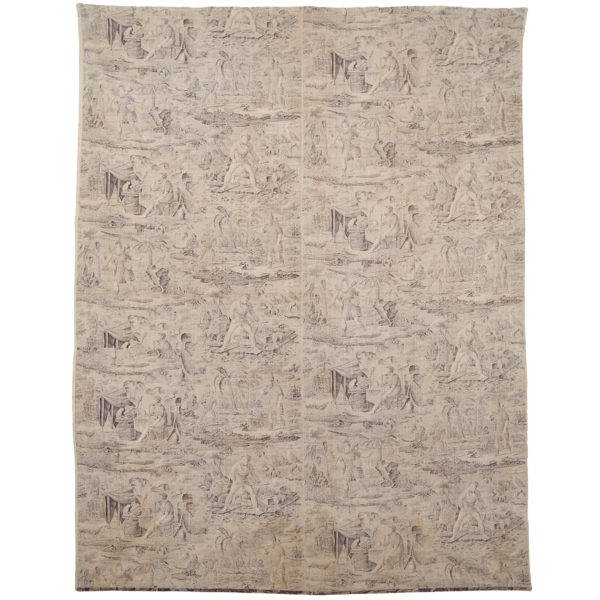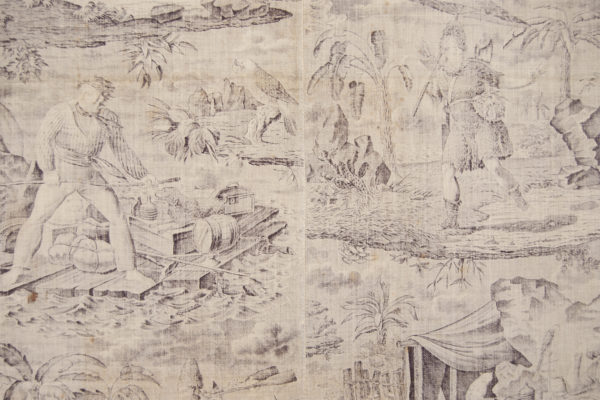Robinson Crusoe Toile
Graphic and detailed textiles like this toile give insight into the culture and time of year in which it was created. Toiles are printed fabrics that were first created in the 18th century in England and France. They began using carved wood blocks to print, and then moved on to engraved copper rolls for finer details. They often reflect the styles of the period, in both costume, lifestyle, and taste. Some show scenes from life at the time, some have figures in clothing from fashion plates, and others contain mythological creatures (such as cherubs) attesting to the popularity of neoclassicism. These fabrics were typically used as home furnishings, such as curtains and bed dressing, and to make clothing.
This toile designed by F. Pieters depicts the story of Robinson Crusoe, a character from an 18th century novel under the same name. Crusoe goes on many adventures, and travels from Europe to South America against the wishes of his parents. The first scene (top left) depicts him on the sea or shipwrecked on an island off the coast of Trinidad with his cats and dog. As the story goes on (following the images from right to left, and then down to the second row from left to right), we see his hair and beard grow longer, showing that years have passed. The top right scene shows him settling on the island, building a shelter for himself and befriending a parrot and a goat. Below that is a scene showing how he has become accustomed to the island, with a very long beard and clothing and an umbrella made of natural fibers or goat skin. He is standing in a defensive position looking out at sea, which may be referencing the cannibals and pirates he had to defend himself against. To the left (bottom left scene) he is shown with his servant that he rescued, Friday, with another companion on his back, likely the “Spaniard” referenced in the novel. These scenes are surrounded with clouds and other island motifs. The design is printed in brown on a white cotton ground.
Circa: Early 19th century
Origin: France
Material: Cotton
Condition: Very Good
Dimensions: 79.5" x 61.5"
Inventory number: TX4981
$1,125
SOLD
Call: (646) 370-6801
E-mail us: yosi@sarajo.com
